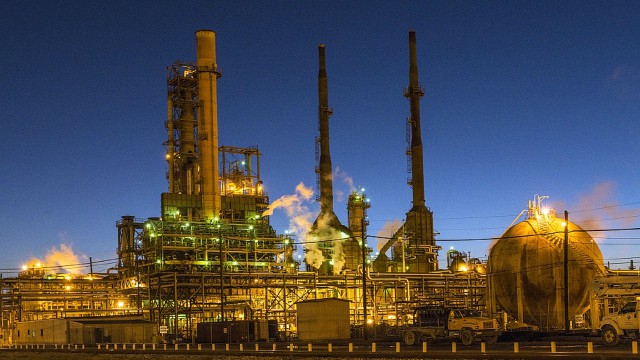Over the past year, oil prices have been on a slow but steady increase with the spot price of WTI oil at under US$40 a barrel. Fast forward to today, and it’s trading at a much higher US$53.18, which should make oil companies very happy. Although the price is not where it was four years ago, at least the bottom has been found.
My favourite oil stock is Suncor Energy Inc. (TSX:SU)(NYSE:SU) for quite a few reasons. It took advantage of low oil prices and bought up assets from suffering companies. With oil prices started to rise again, I see Suncor benefiting quite handsomely from its strategy.
There are two main deals worth discussing. One is the takeover of Canadian Oil Sands, which cost the company $6.9 billion. Suncor also bought 5% of the Syncrude project from the Canadian subsidiary of Murphy Oil Corporation for $937 million. Both of these are significant because Suncor’s exposure to the massive Syncrude project grew from 12% to 54%.
The Syncrude project is massive. Back in 2009, it was estimated that current production capacity could be sustained for 90 years, so this takeover is lucrative for Suncor. Consider that at the end of 2015, Suncor produced 582,900 barrels of oil per day. One year later, it’s producing 738,500 barrels a day.
Suncor also expanded its stake in the Fort Hills project to 51%. Although this project hasn’t started production, the expectation is that by the end of the year, the first oil will be pumped, which will add even more production.
Along with increasing its production, Suncor has also decreased its operating costs. In Q4 2015, the company was spending $28 per barrel of oil pumped. By Q4 2016, that had dropped to $24.95. When you’re talking about 738,500 barrels a day, a $3 change is equal to $66,465,000.
But Suncor isn’t just oil pumping. It’s actually an integrated energy company, which means that it uses every step of the supply chain. It pumps the oil and then ships it to refineries it owns. From there, it can ship it to the 1,500 Petro-Canada stations it owns. This provides revenue from more sources, which protects the company when oil prices dip.
That being said, although Suncor likes to own pieces of the entire supply chain, when a good deal shows itself, the company acts. In February, it completed the sale of its Petro-Canada Lubricants business, a non-core asset, for $1.125 billion, which helped streamline the company.
Here’s the reason I think you should buy and forget that you own Suncor: it has an incredibly strong balance sheet and is generating stronger margins on larger production. Therefore, it’s in a position to generate a lucrative yield for investors. Currently, it yields 3.15%, which is good for a quarterly $0.32 per share. It’s important to recognize that this is 10% higher than the dividend in 2016. Management has taken a pro-investor approach and is returning growing amounts of cash to investors.
All in all, with oil prices on the rise and a slew of smart production-heavy acquisitions on the books, Suncor should have a great few years ahead of it. Buy, forget, and earn the dividends.






